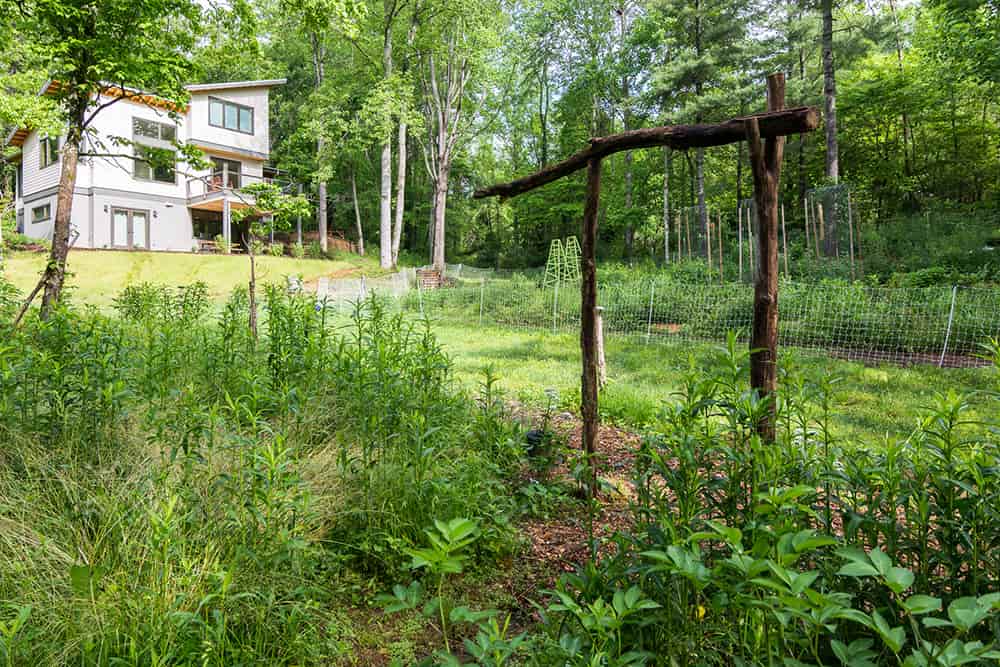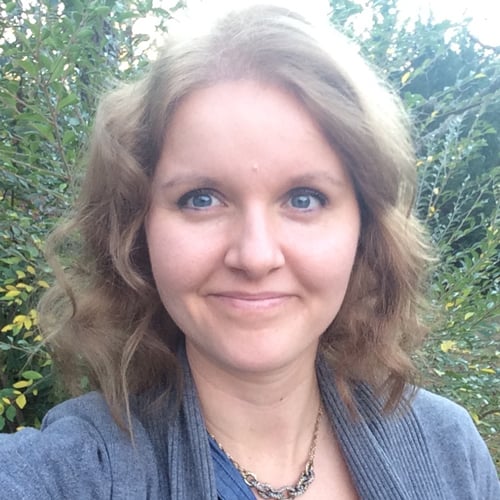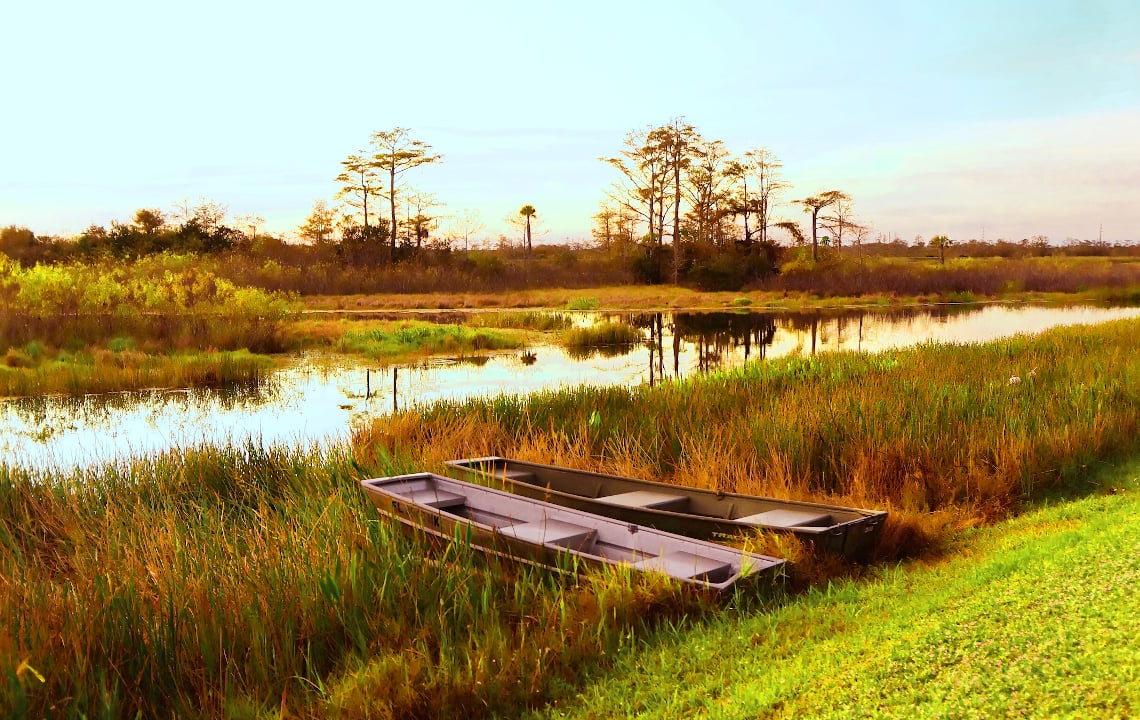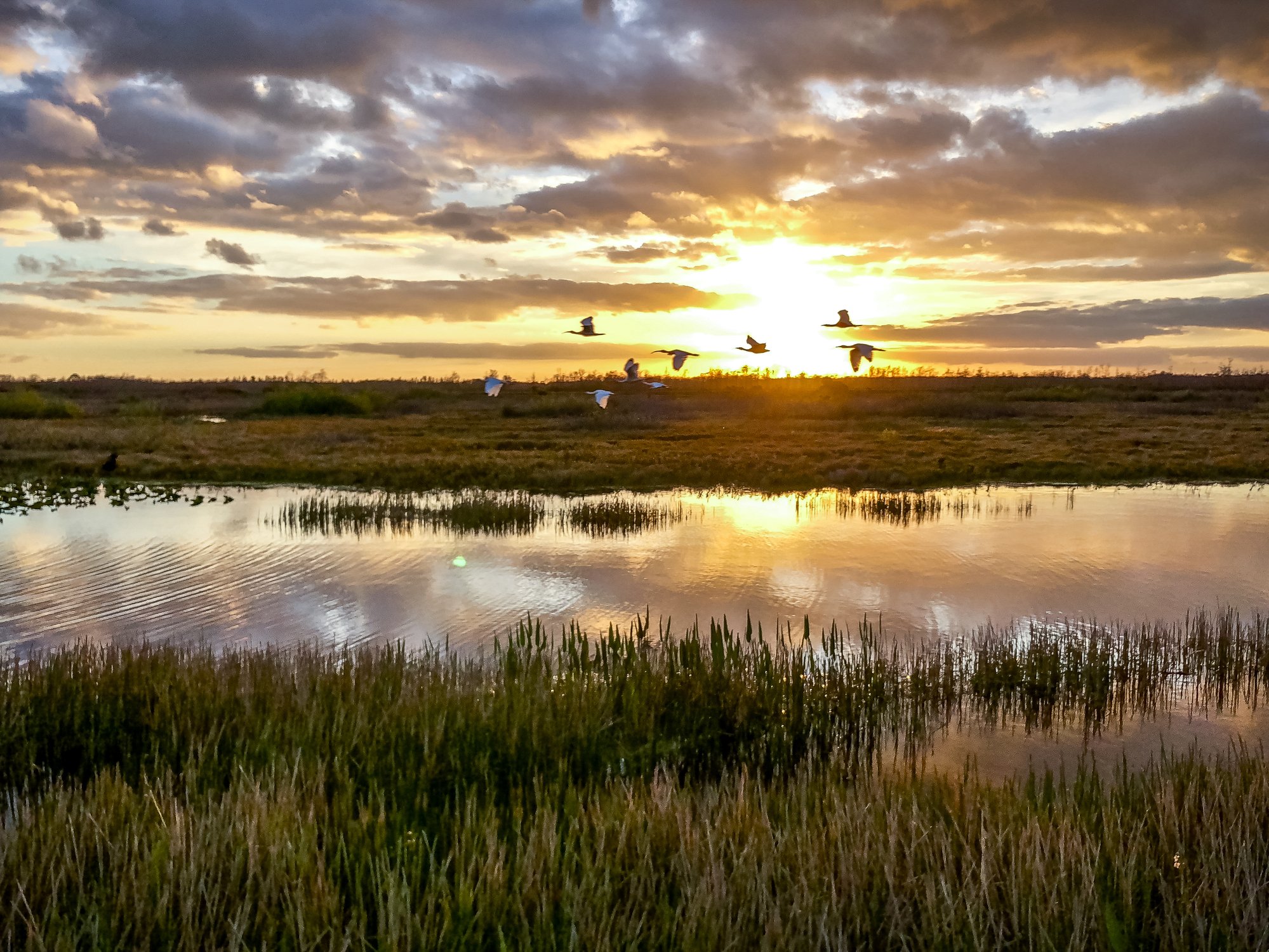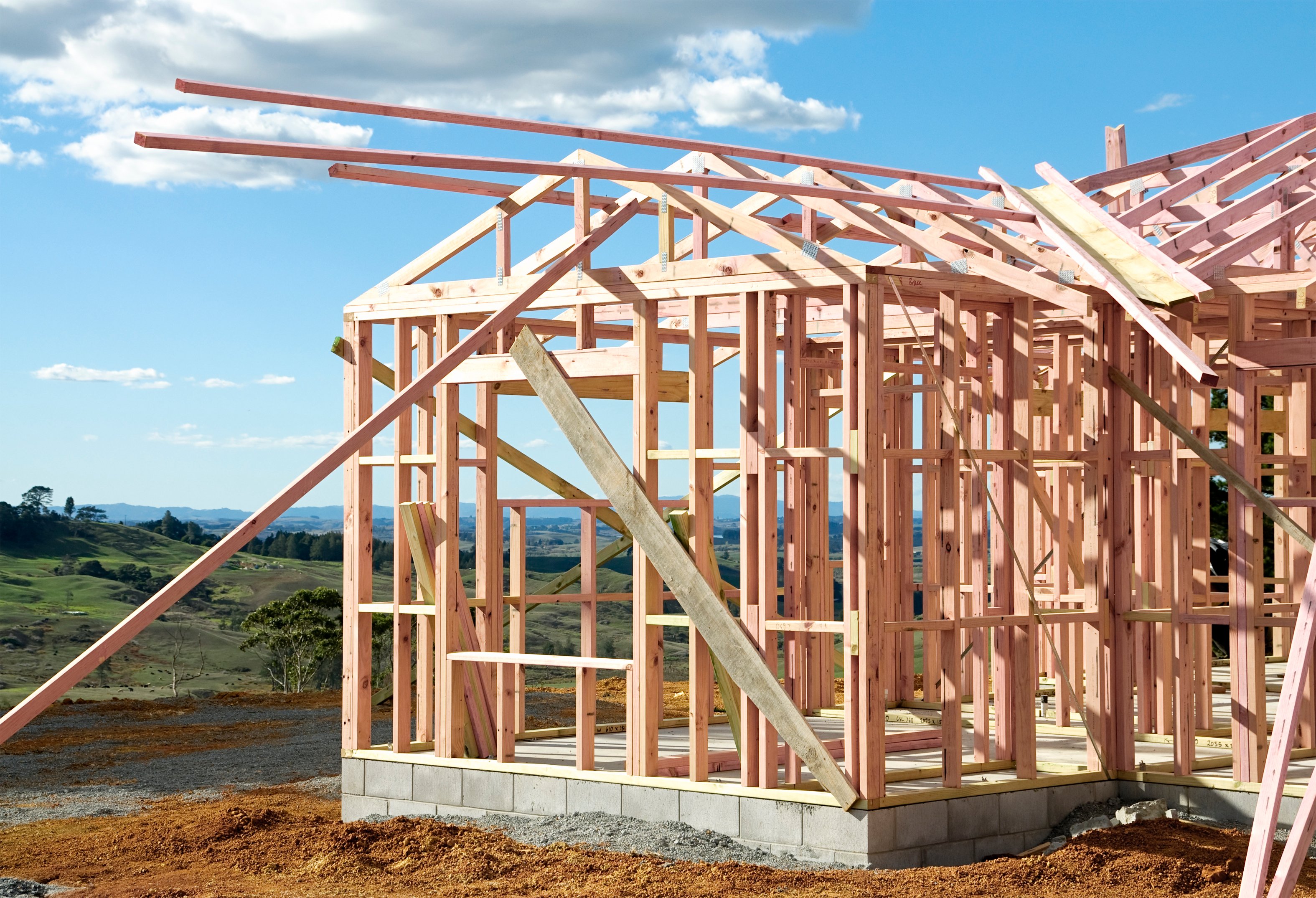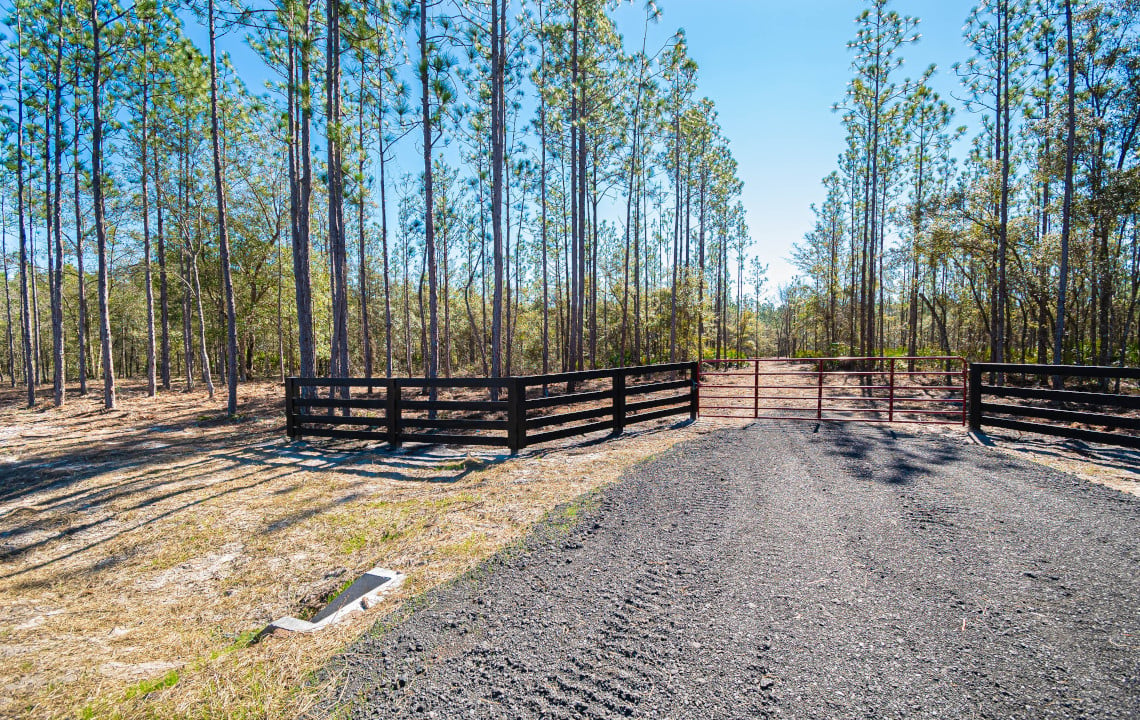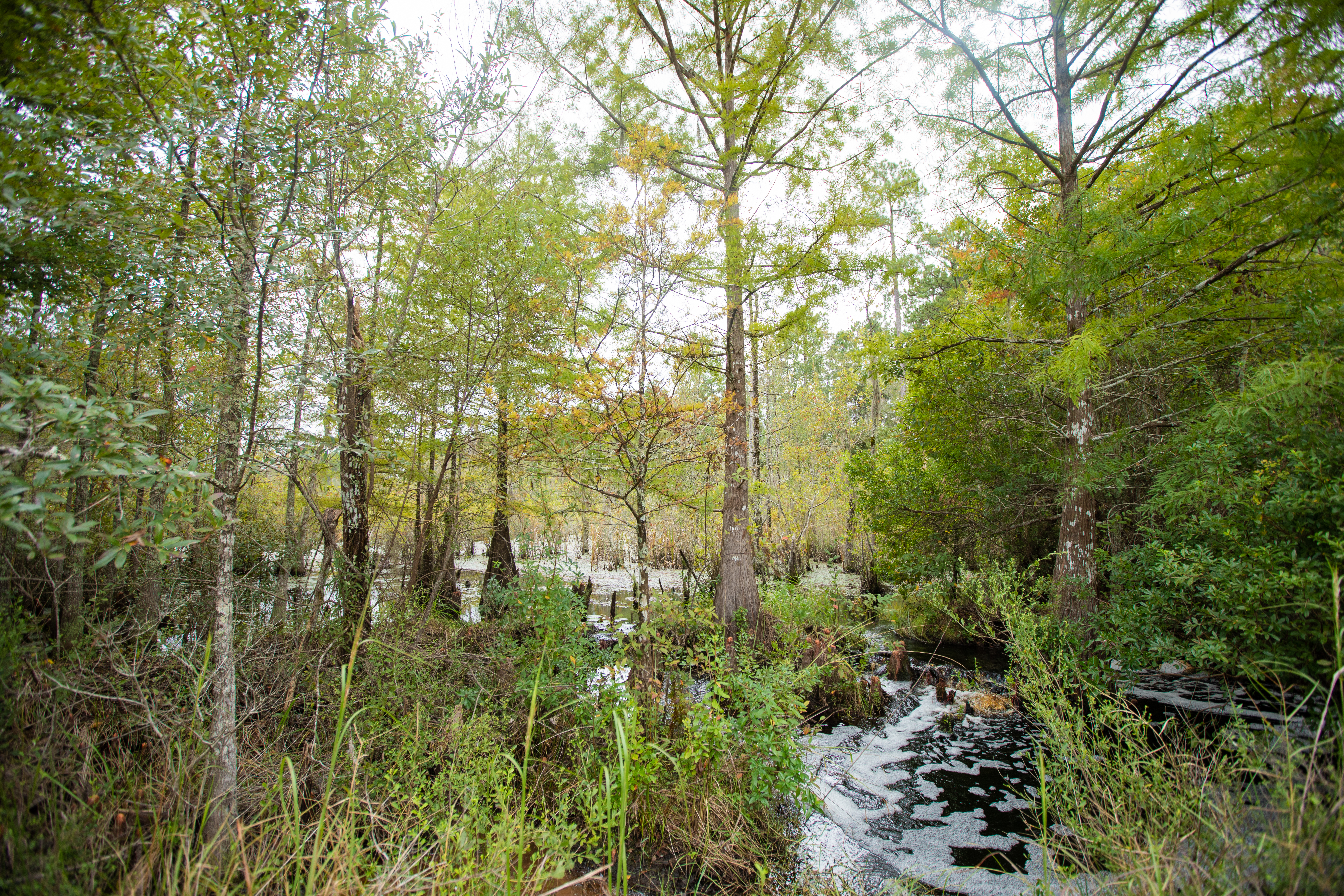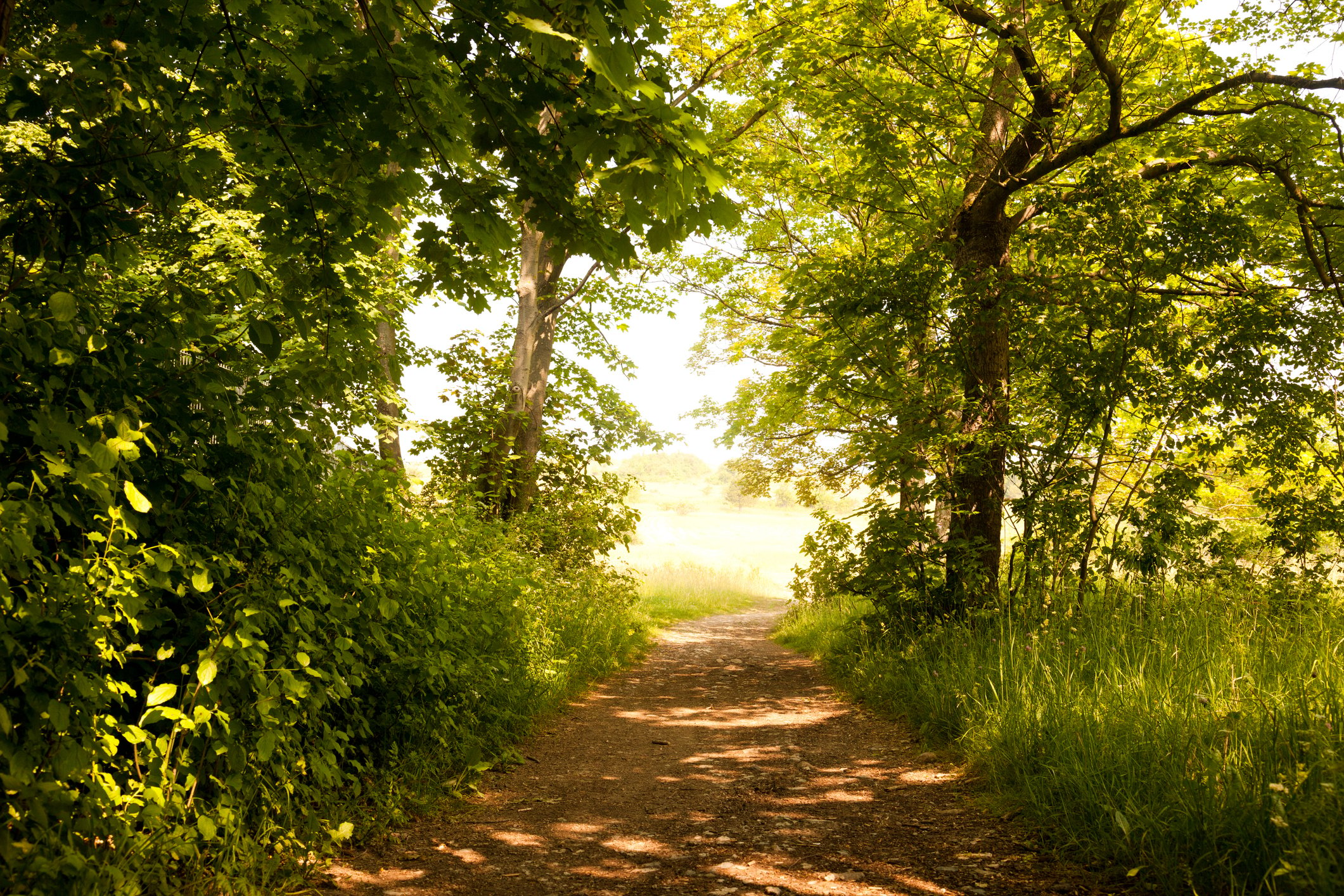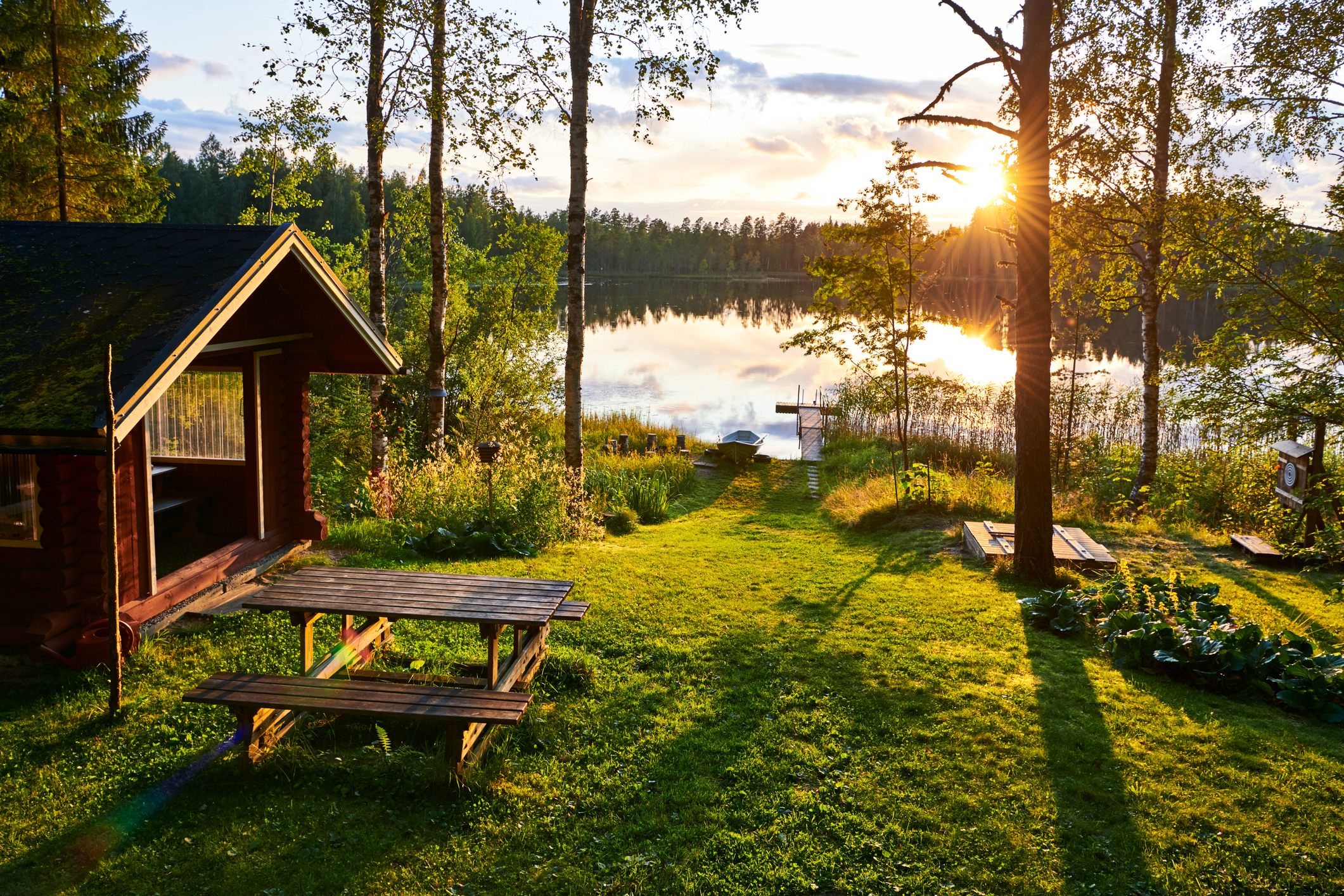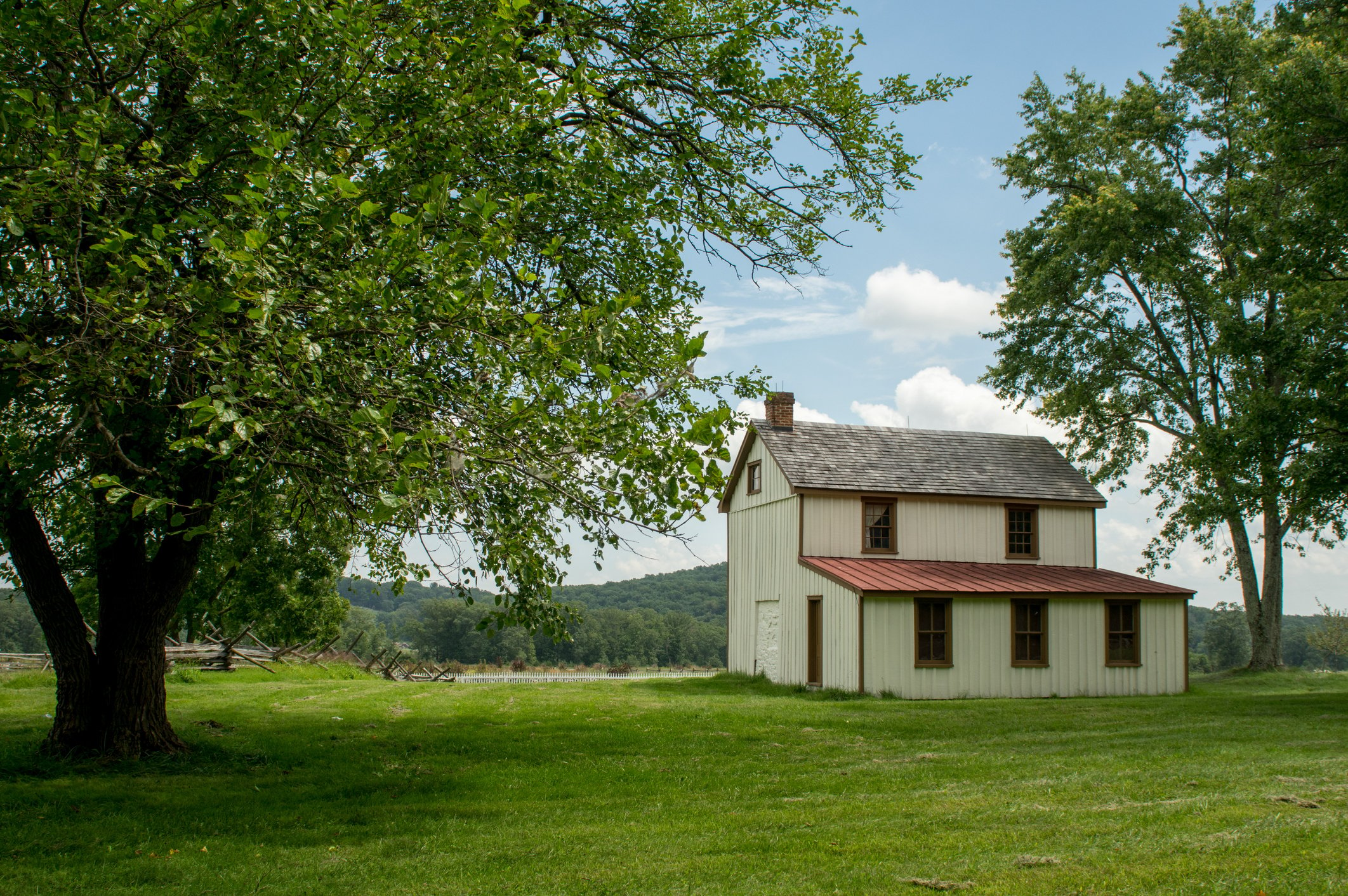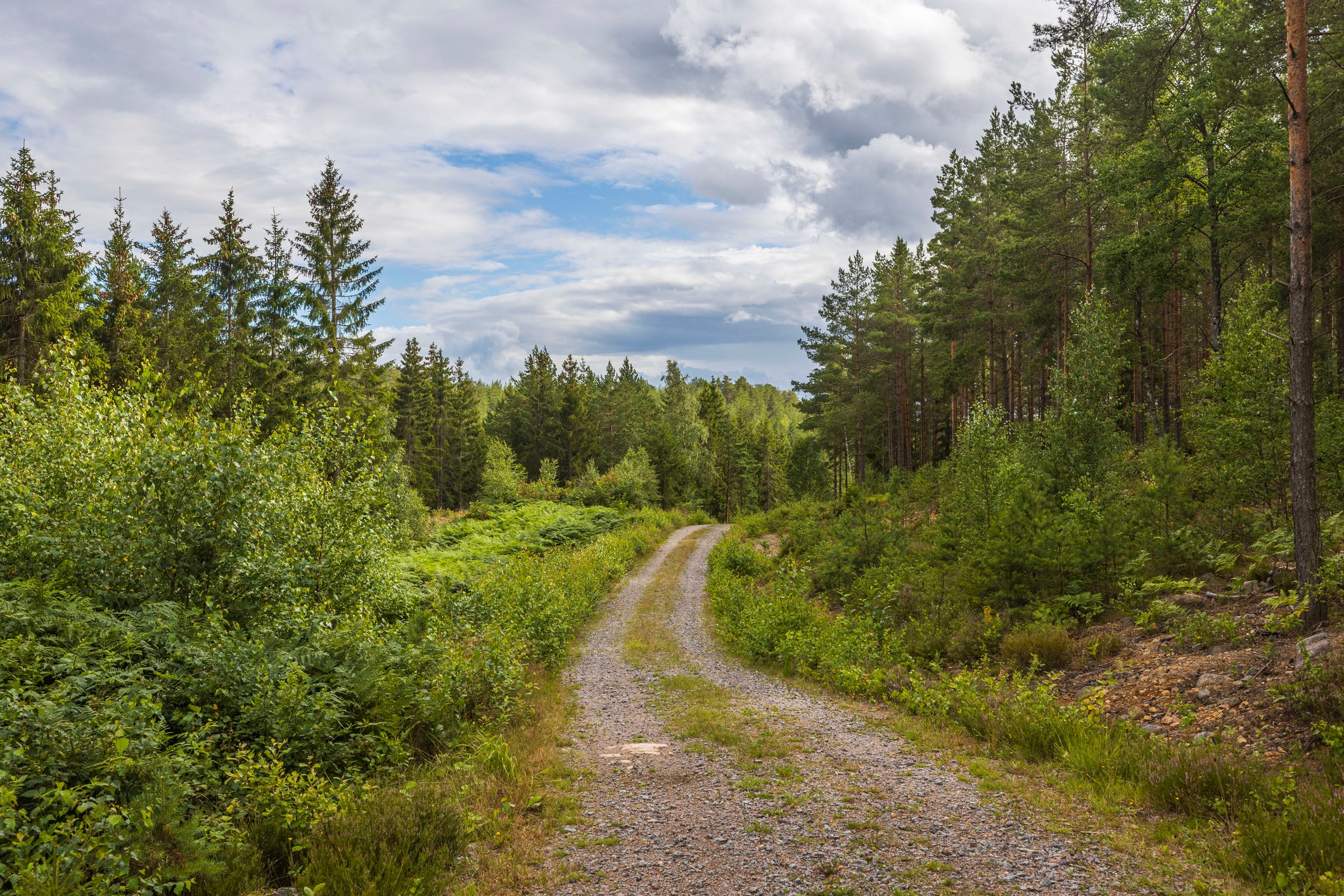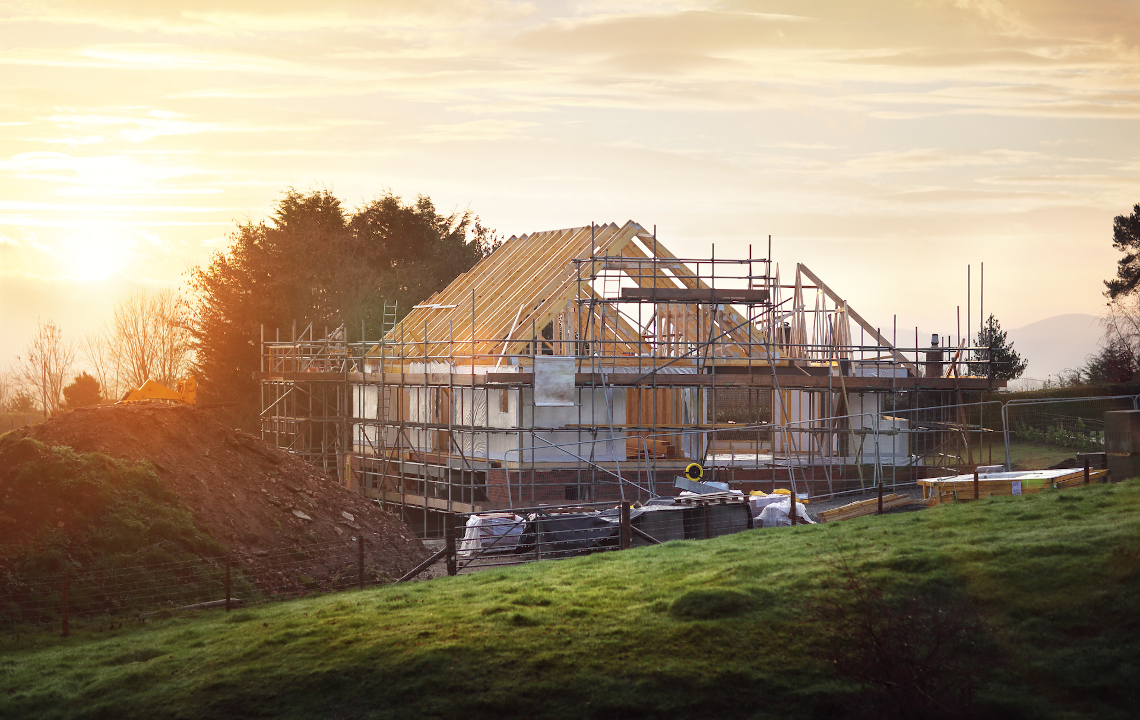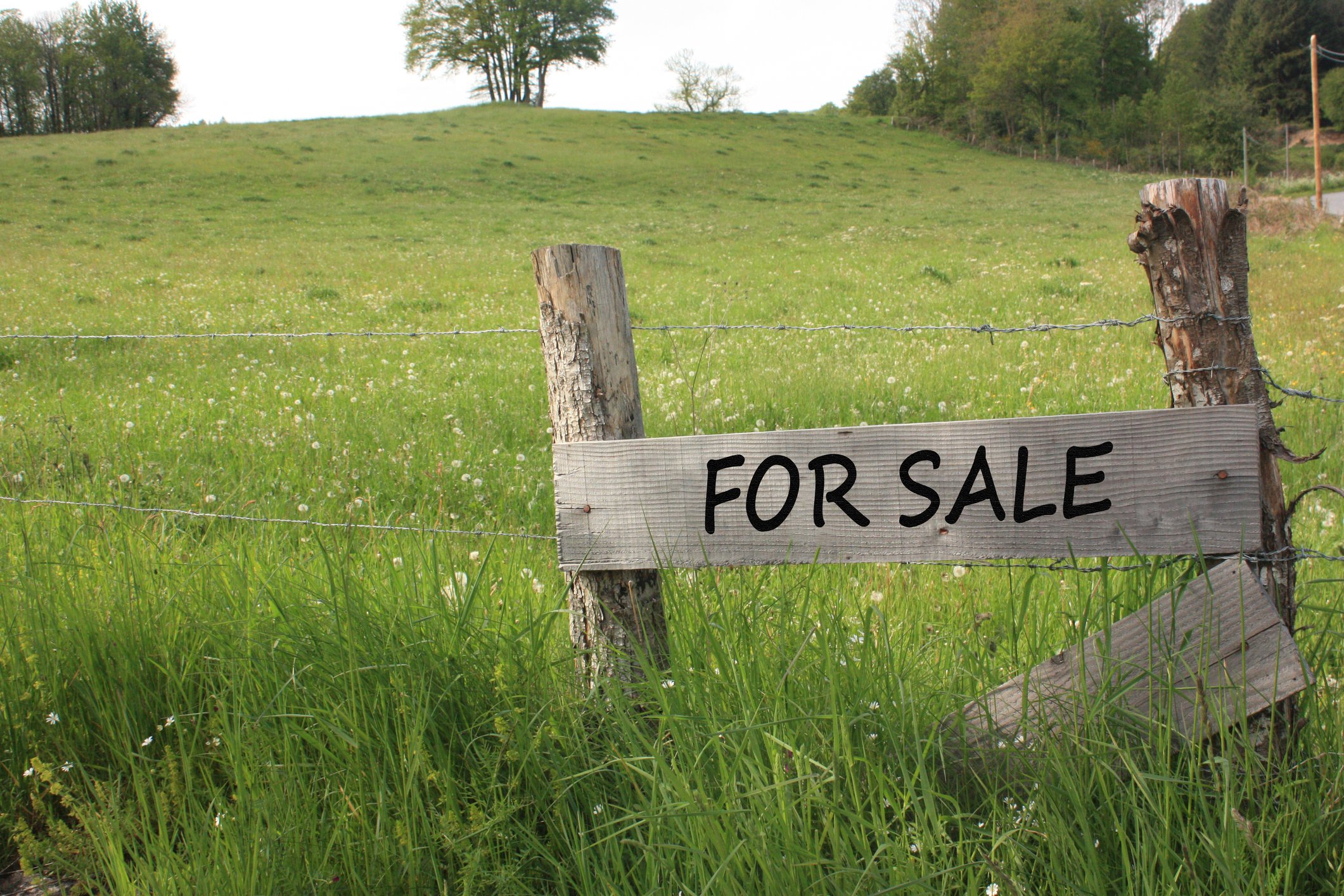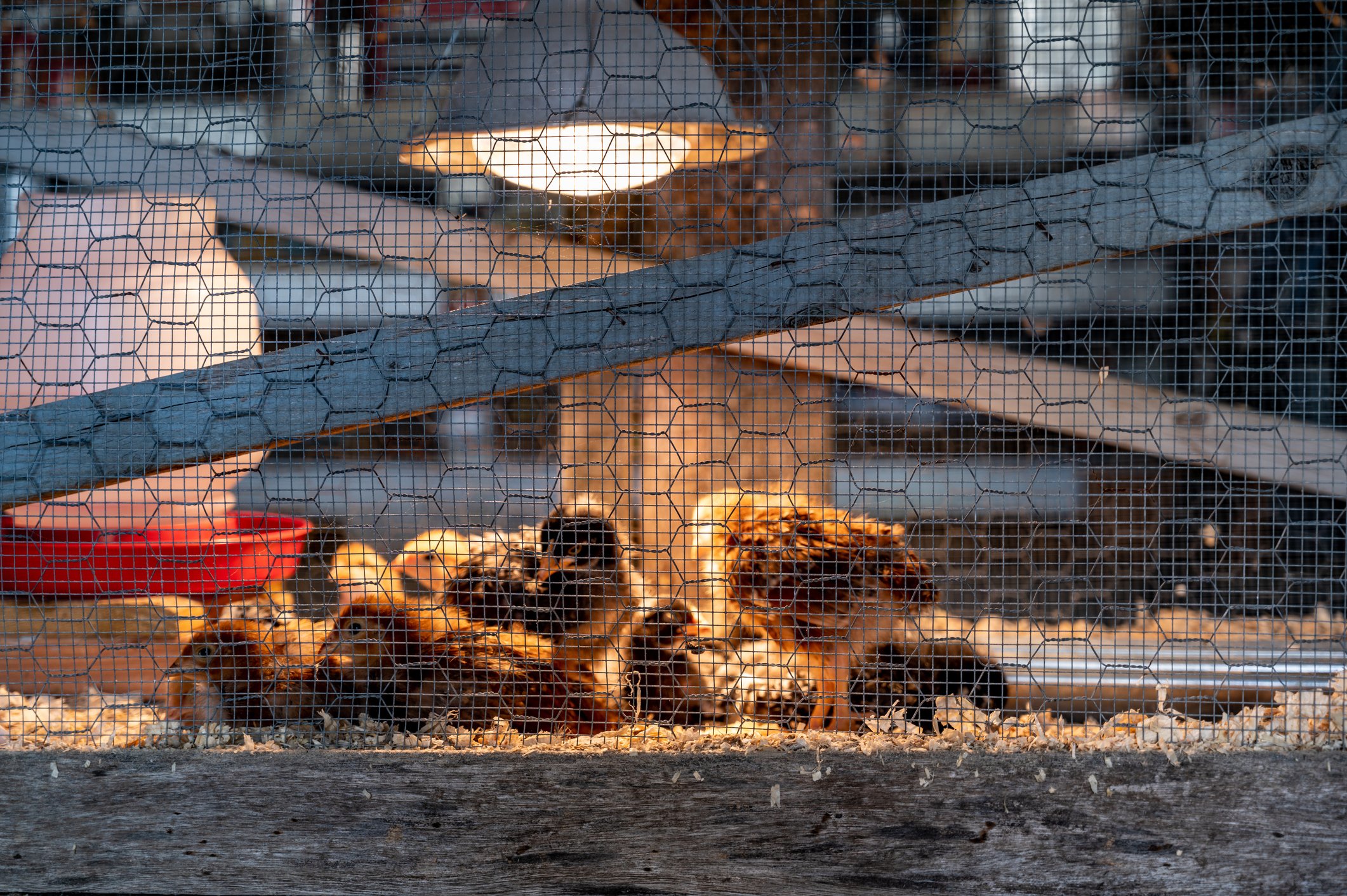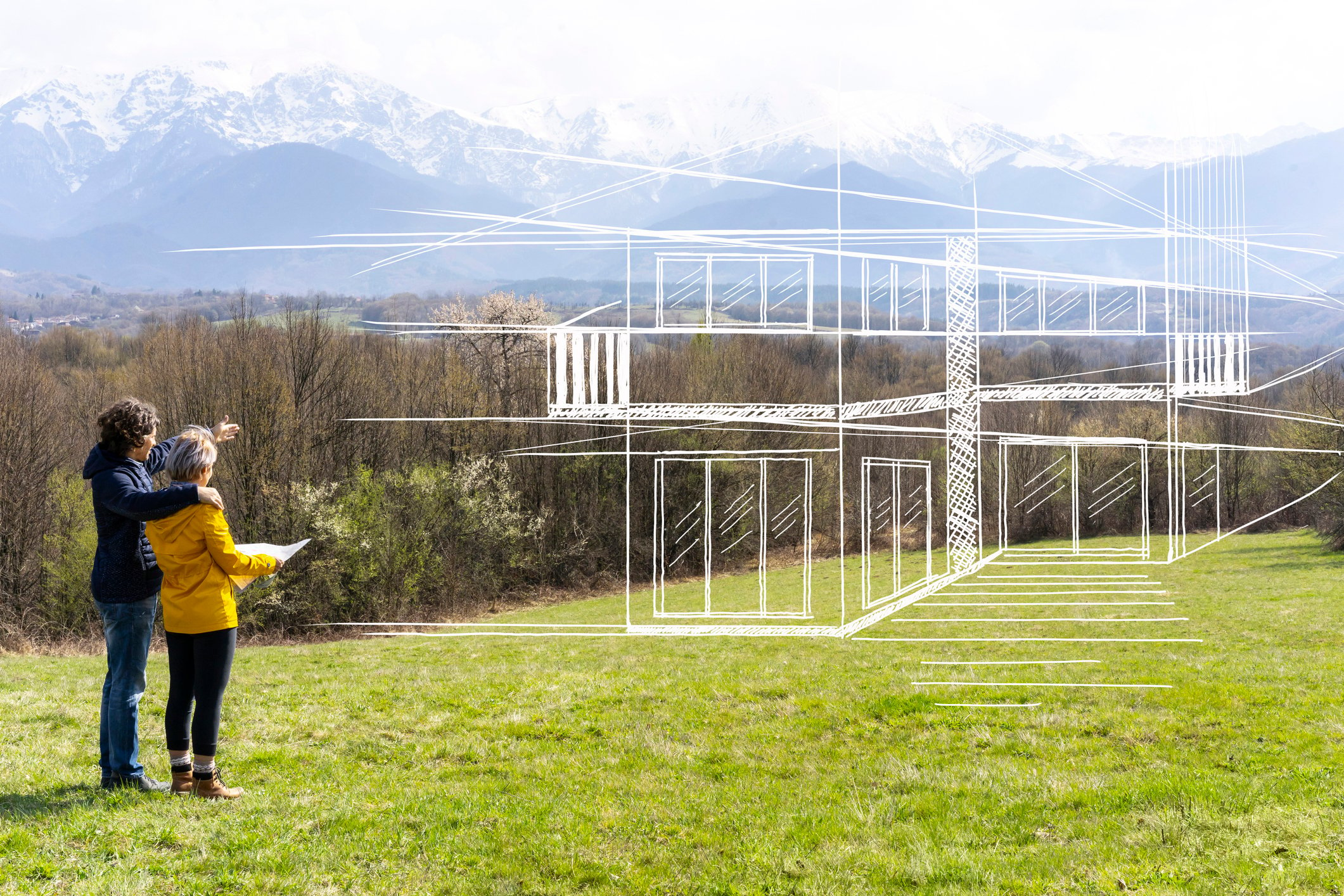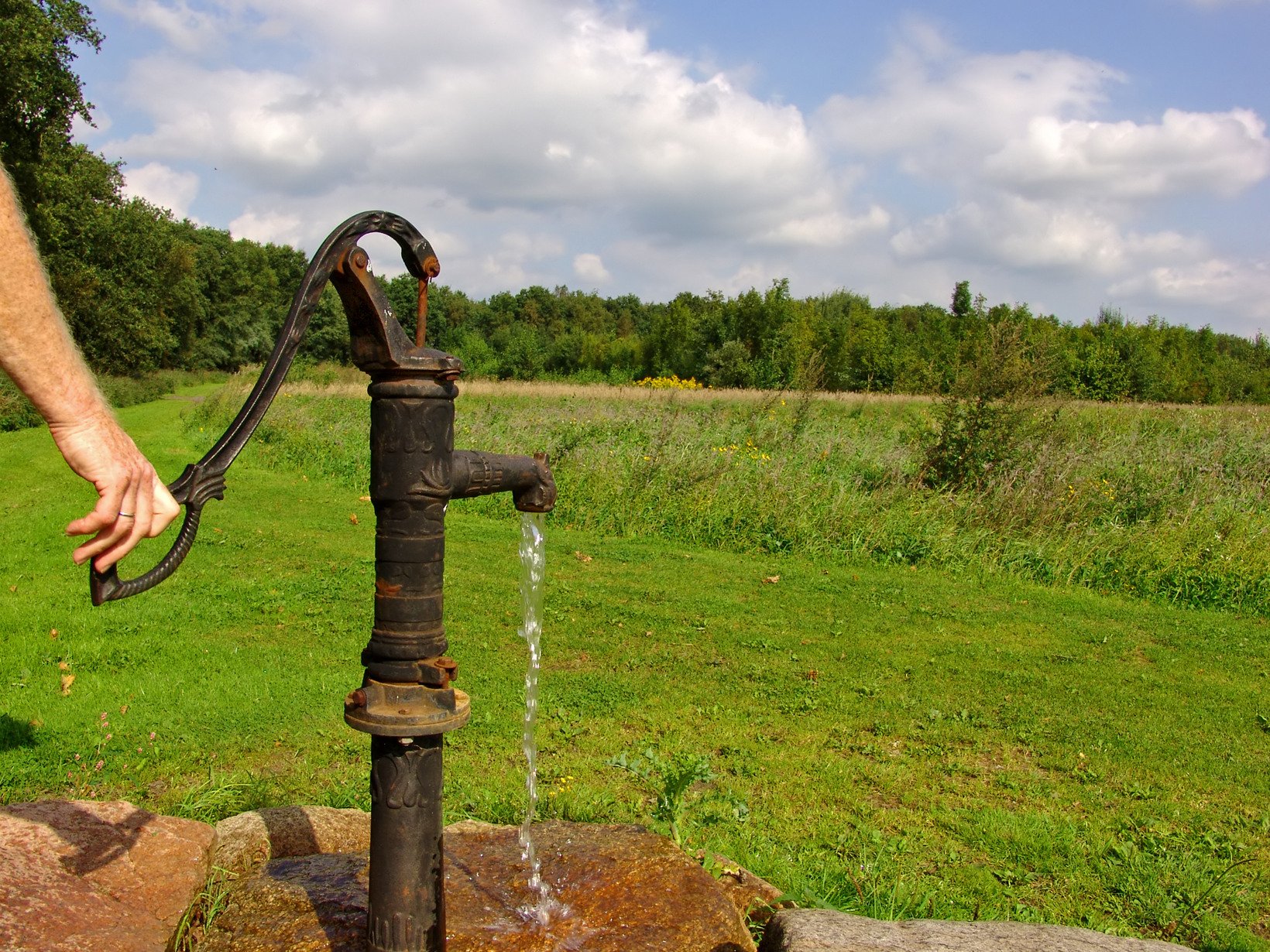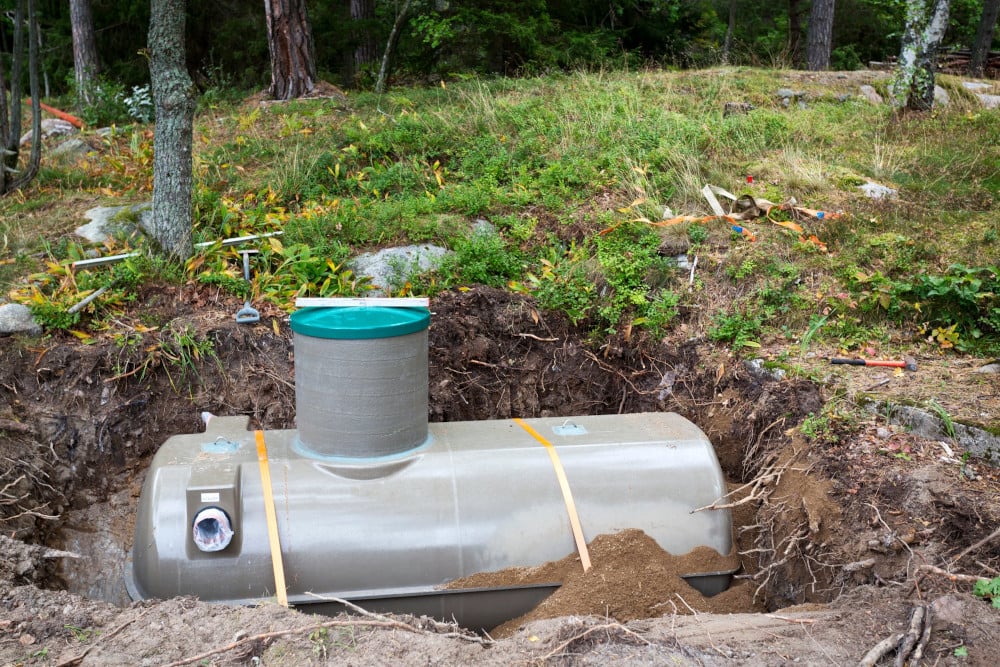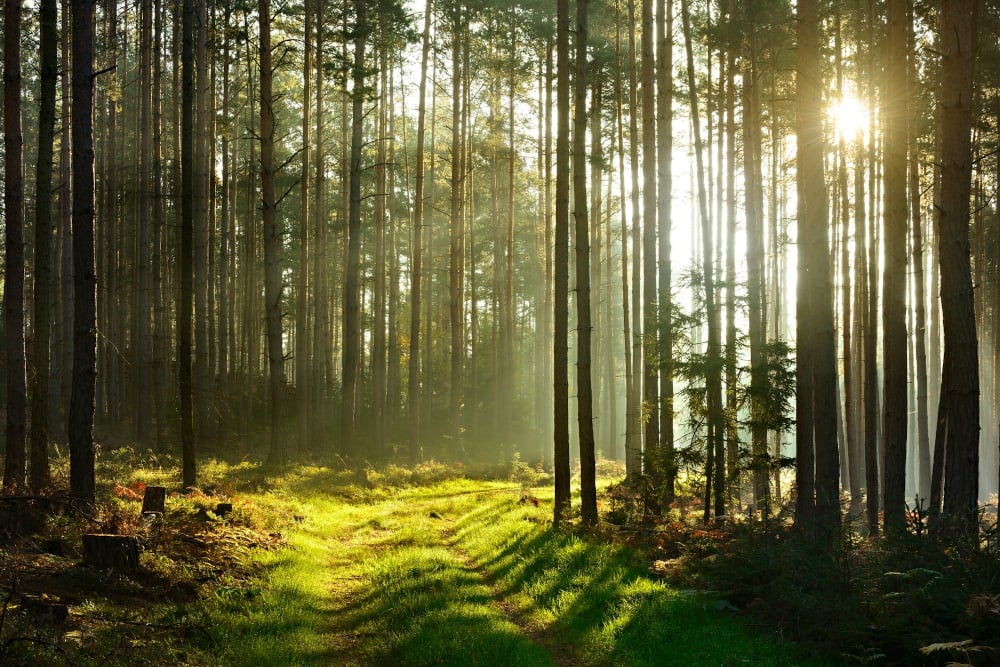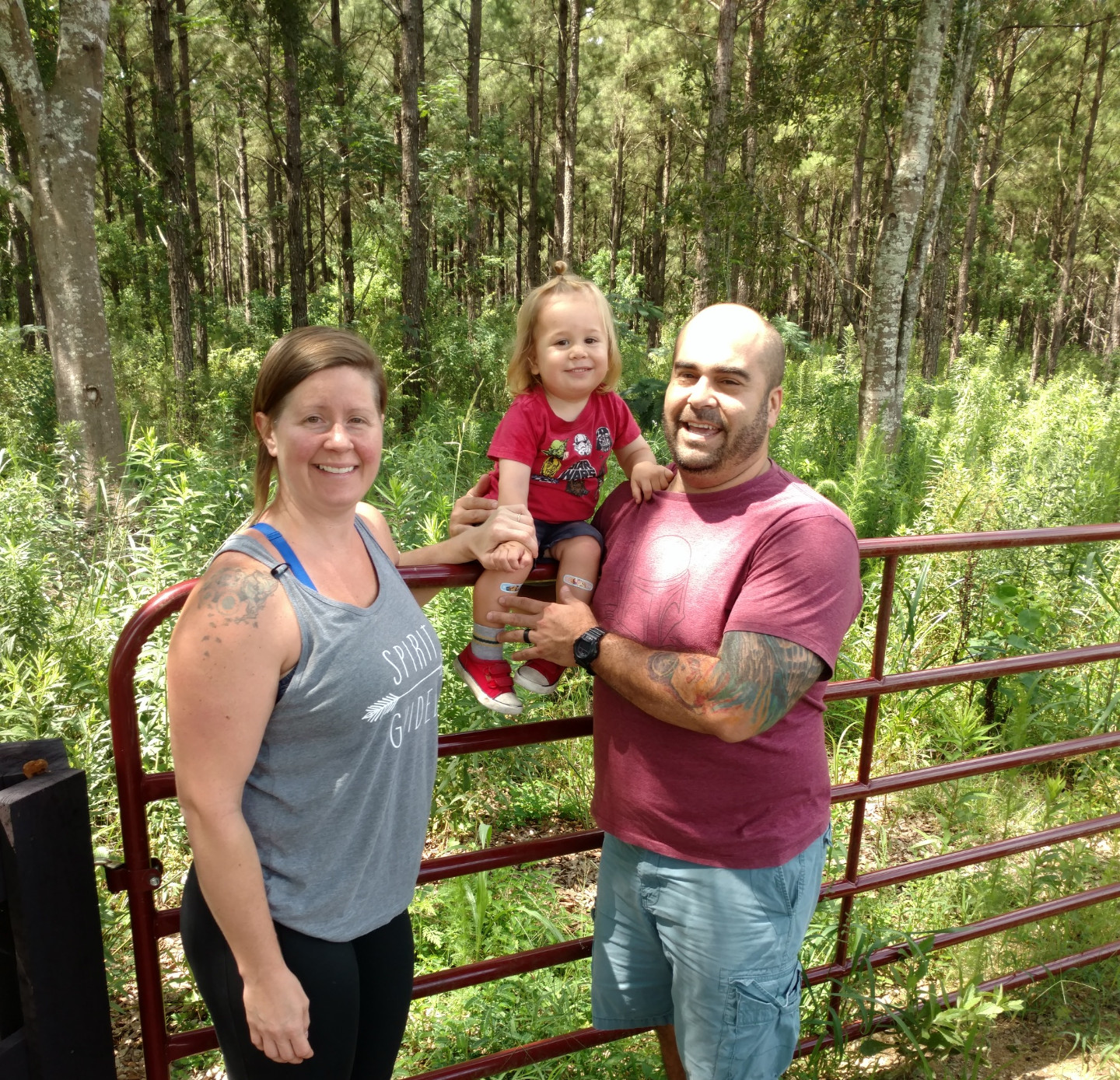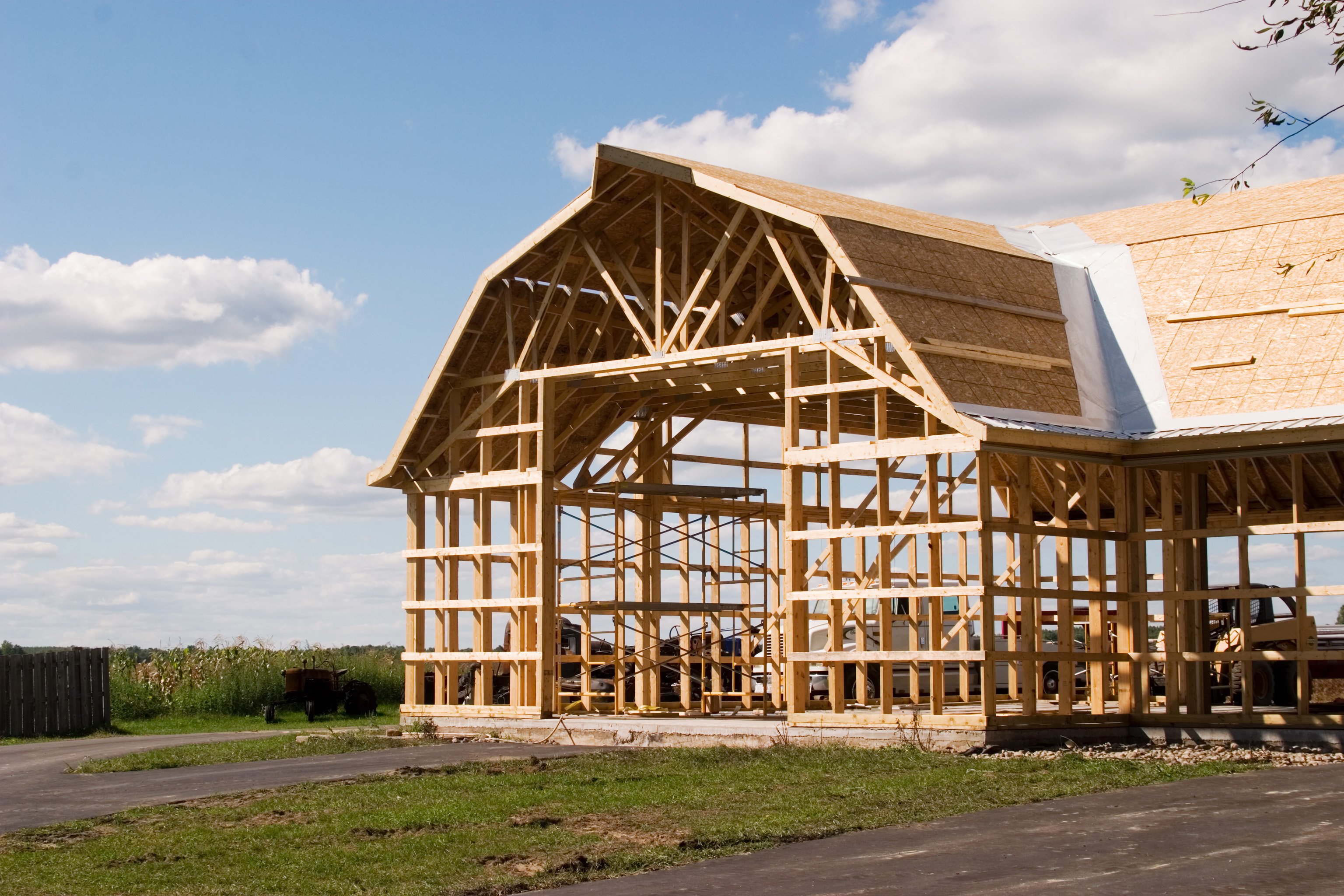Have you dreamed of designing and renting out a country retreat through a popular site like Airbnb.com? One family shares how they made their rural Airbnb home a success.
The Hartman family live on a small piece of acreage just outside the Asheville, North Carolina city limits. 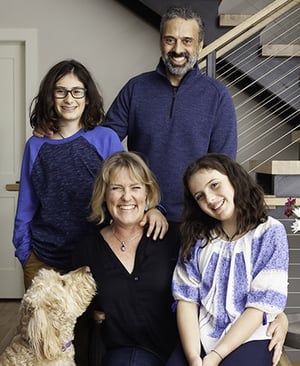
Despite their proximity to one of the South’s most popular tourist destination cities, their land is rural in every sense.
Walk outside at the right time of day in the right season, and you may catch a glimpse of a black bear, wild turkeys, deer, a bobcat, some turtles or any number of birds. They’re less than a mile from several world-class hiking trails and the winding road to their home is surrounded by pasture and nature.
It’s the ideal blend of mountain-country-living with hip-city convenience.
So, when their neighbor’s home burned down about four years ago, the Hartmans leapt at the chance to buy up the 2.5 acres that abuts their current home.
Their plans for the land were vague, but after much planning, discussion, decision-making and brainstorming, they decided to build an Airbnb-style minifarm retreat: Blue Turtle Farm.
The only thing was, neither of them had any experience running a microfarm OR a hospitality business...nor did they have much spare time to learn. Meggan is a psychologist, sleep consultant and faculty member at Meridian University and Brody is an executive at a leading branding agency, as well as a Purpose Guide, mentor and a meditation teacher.
Yet they forged ahead and have managed to exceed their Airbnb business financial goals in just one year.
How did they do it (and could you do the same)? Read on to find out.
It All Started With 2.5 Wild Acres, A Chicken Coop And A Concrete Slab
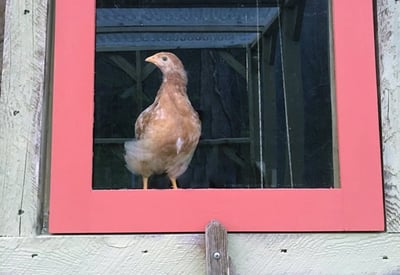 Brody and Meggan knew they had something special in their new property (it’s not every day 2.5 acres with an existing house foundation and driveway go up for sale in your backyard). The trick was discovering the best use of that wild 2.5 acres.
Brody and Meggan knew they had something special in their new property (it’s not every day 2.5 acres with an existing house foundation and driveway go up for sale in your backyard). The trick was discovering the best use of that wild 2.5 acres.
“We sat on it for two years because we knew we had to get the overgrown land in order first,” Brody says. “So we got some chickens, got out there on weekends with the weed wacker and just dreamed about what we could do.”
Meggan adds, “We also had to set a clear intention for the property—do we want to have someone come in and do flowers, do we want to grow herbs or create a market garden? So we had to look at what we could feasibly do and manage with our limited time, and what made the most sense for income. We also knew we wanted continued access to the land.”
While they knew they wanted to care for the land by starting a sustainable “pocket farm,” they also knew the existing homesite would be perfect for an investment home.
“We always knew we’d build on that land someday and possibly move there,” Brody says, “the question was: just what type of structure to build and when?
“And if you’ve never managed or developed even a small piece of land, it’s a HUGE learning curve. So we had a ton of people come out to assess the soil, the water situation and where to place the home visually for functionality, off-grid capability and aesthetics.”
The Hartmans also talked to their neighbors about their plans and studied the local zoning laws.
Once the land was in order, they’d chosen the best homesite and decided on a short-term rental business, the next big choice was: what type of house to build?
Figuring Out What To Build: Tiny Home, Cabin Or Designer House?
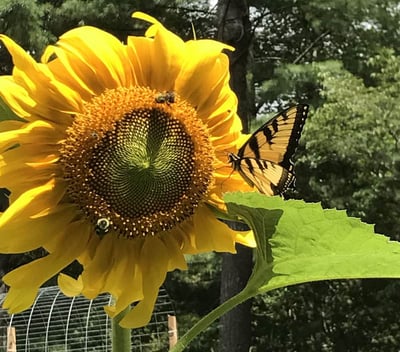 The Hartmans originally thought they’d build something small and simple to keep costs low, but after talking to two real estate experts, they changed their minds.
The Hartmans originally thought they’d build something small and simple to keep costs low, but after talking to two real estate experts, they changed their minds.
“We consulted two of our friends in real estate and they both recommended we build-like we-needed-to-sell,” Brody says.
With that in mind, they began researching comps and found most buyers in the area were looking for a 3 bed, 2 ½ - 3 bath home with “X” amenities.
Brody says 3 other factors weighed heavily on their decision:
“#1: If we flip it one day, how do we get the most out of it for resale? #2: If we were to move over there, what would we want in a home? And #3: what would an ideal Airbnb experience be for our guests?”
In the end, the Hartmans hired a reputable local high-end builder to construct a modern 3-story, 3 bedroom/3 bath home with a separate basement suite on the existing foundation.
“Having a good architect or good house plans and finding a reputable builder is key. You also need to think about parking when designing your space,” Meggan says.
Next, They Turned Their Attention To Learning Their Local Airbnb Market
With a reputable builder in place and home design underway, the Hartmans re-focused on learning the local short-term rental market.
“We researched local Airbnbs and VRBOs for going rates, we read the reviews and drew on our personal experience as guests of Airbnbs,” says Brody. “We also talked to a lot of people who had Airbnbs. Knowing the market in your community is essential.”
How they determine competitive pricing:
While there are Airbnb-centric consultants, articles and content available, Meggan offered this advice on pricing:
“We knew we had to cover our costs and make a profit, and at the end of the day you’re working backwards from your mortgage—and it’s a bit of a moving target in the beginning because you know that number will change once you’re finished building.
“The Airbnb suggested rate for our area is lower than we decided to charge. But, we had a clear intention: we wanted to create the best experience in the best environment, and we knew people would pay for that.”
And they have. To-date, the Hartmans’ Airbnb earnings have already exceeded their monthly mortgage…and it’s been open for short-term rentals for less than one year.
“Pricing also depends on how you want to run your rental. For example, will it be a year-round rental or do you really want to crank it for just 4 months out of the year? So again, your intention and goals are everything.”
Tips On Creating The Best Experience In The Best Environment (without breaking the bank)
When it comes to creating an optimal guest experience, attention to detail is everything.
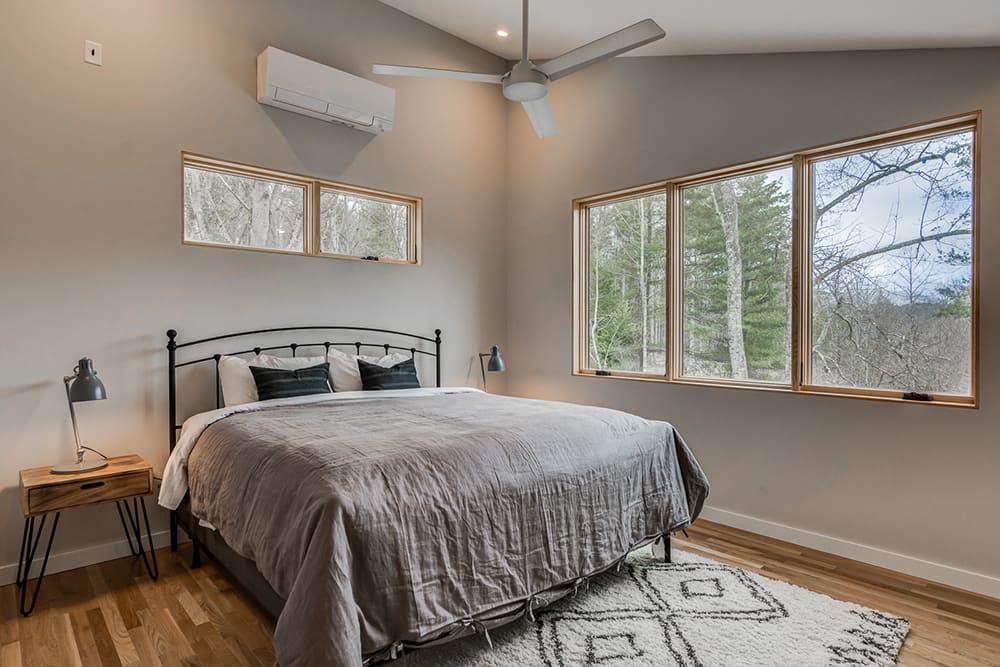
However, when you’re floating a mortgage and a construction loan you can’t typically do everything high-end. Here’s how the Hartmans furnished and decorated their Airbnb without breaking the bank:
-
Don’t go high-end on all the furniture. “Fortunately, the gentleman at our local furniture store runs his own Airbnb and told us where to invest,” Meggan says. “For example, he said not to invest in rugs, like use outdoor rugs indoors, and to think about high-traffic vs. low-traffic areas.”
-
Put your money where the details matter. “This means quality of the sheets, towels, beds, soaps and sundries. We’ve even gotten good reviews on our toilet paper, so little things like that matter to people.”
Once The House Was Complete, There Was Still A Lot To Do To Prepare For Guests
“In addition to getting the professional photography and branding/descriptions done, furniture had to be moved in and put together, detailed cleaning had to be done, window treatments installed, etc.,” Brody says. “It’s important you build in extra time to complete those details.”
When the house was finally done, the Hartmans invited friends and family to stay and critique the home.
“We told them to bring it! And thanks to their feedback we wound up replacing the downstairs bed and making some further improvements,” Meggan says.
To buy some time (and secure some more feedback) the Hartmans also rented the home to a local family of four for the first 3 months.
“That gave us a buffer and their feedback was extremely helpful.”
How They Promoted Their Brand New Short-term Rental Property
The Hartmans listed their home on Airbnb and VRBO and paid special attention to branding.
“Professional photography is very important,” says Brody, a branding expert, “as is getting the descriptions and owner’s manual just right.
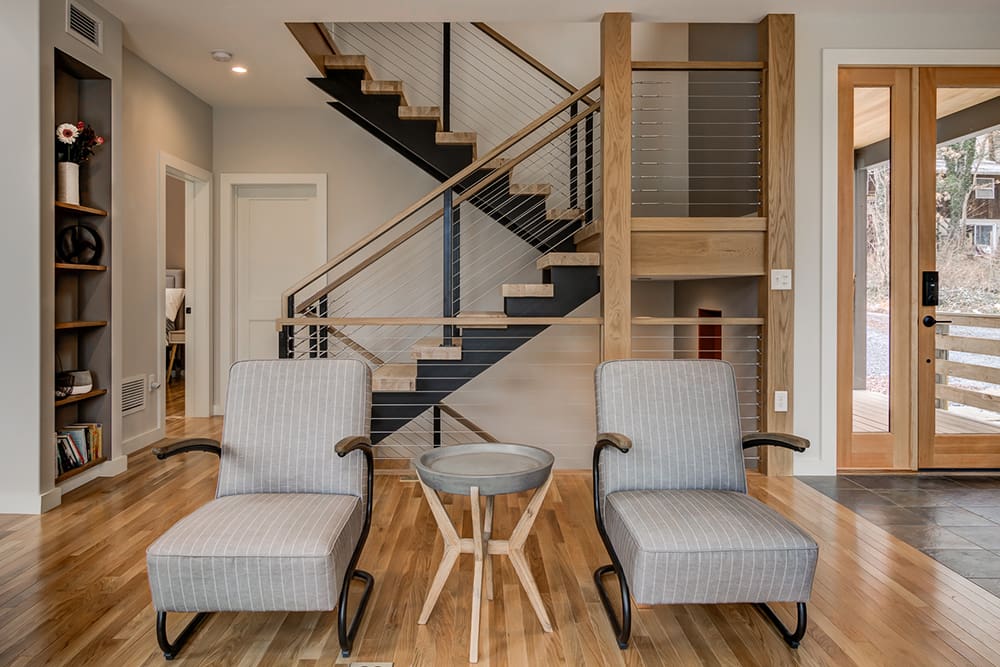
“I’ll never forget when I got that first notification from Airbnb, then the first booking. It was so thrilling to see. I still get excited when I see them come in!”
Since Airbnb is all about recommendations and ratings, the Hartmans are vigilant about responding to guest requests, addressing any concerns and rating their guests promptly.
This attention to detail earned them “superhost” status in October. “It’s really important to get those milestones met, and it’s a high bar—no cancellations, at least 4.5 stars every time—but if you deliver, then superhost status will come,” Brody says.
While they are listed on both Airbnb and VRBO, they’ve found each application has its own distinctive audience and find Airbnb’s interface more intuitive and easy to manage.
To avoid double-bookings, they use an integrated managing calendar.
Running The Day-to-Day (Without Quitting Their Day Jobs)
For day-to-day, the Hartmans highly recommend hiring an exceptional cleaning service that specializes in short-term rentals/hospitality.
“Our first service was good, not great,” Brody recalls. “They didn’t get all the details or what it meant to be a superhost. I spend a lot of time in hotels for my job, so I know what those details are!”
One day, their cleaning service didn’t show up and Brody and Meggan had to run over to clean the house themselves. After that, they found a better service.
“We wound up hiring a husband and wife team who also does basic maintenance, which has been a game-changer,” Brody says. “They know what it means to care for a short-term rental, for example, she brings local magazines and keeps them up-to-date, and keeps the house impeccable.”
They’ve also given the cleaning service access to their booking calendars, which automates the entire process.
“Now we could leave the country for a month and would not worry.”
With the cleaning and maintenance dialed in, there’s very little other day-to-day work.
“The only other thing we do regularly is bring over wine, crackers, cheese and a custom welcome note,” Meggan says.
Technology also helps keep the day-to-day tasks at a minimum.
The Hartmans have set up their online booking so guests can book automatically—provided they meet certain requirements. Then they send a personal reply.
They also use an app that tells them if the doors are locked or unlocked, and they are out on the farm regularly should the guests need them (which they usually don’t).
How To Avoid Negative Reviews
Negative reviews are the plight of any modern short-term rental business, here’s how the Hartmans have maintained a nearly unblemished review profile:
“Airbnb lets you communicate with the guests before your mutual reviews are published. So we always take that opportunity to ask the guest if there’s anything we can do to improve hospitality. says Brody.
“With that approach, we’ve only had one 4-star review on one attribute saying we weren’t truly 12 minutes from downtown, so we changed the listing to 15 minutes.”
They also recommend being clear about the role you will play as host.
“Some hosts live off-property, some hosts live next door and personally greet every guest,” Meggan says. “We let people know we’ll be on the property and will be as available, or not, as they want. Most of our guests want to be self-sufficient and just say hello if they happen to see us, and we’re fine either way.”
How Long Did It Take The Business To Become Profitable?
“Our profit goal for year one was to exceed our mortgage costs, and we managed to do that within the first month of full-time short-term rentals,” says Brody. “There are months now that we’re more than doubling our mortgage.”
The Hartmans believe their location plays a role in this, as does the quality of the home and the natural beauty of the land.
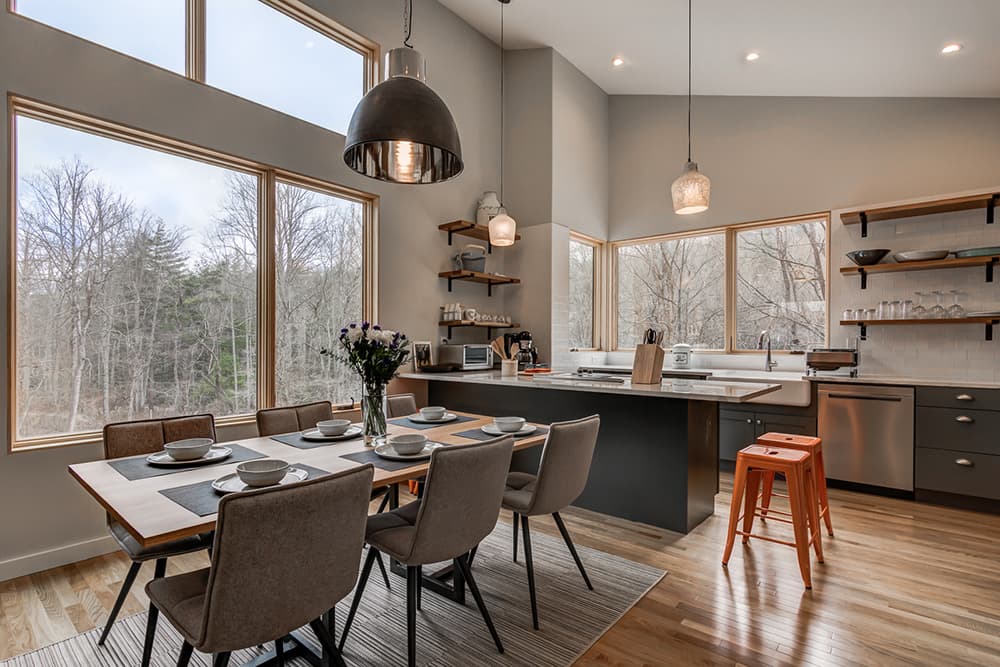
Insider Startup Advice: What They Wish They Had Known
When asked their biggest startup challenges, the Hartmans offered these lessons learned:
-
“Money out vs. money in while building is a roller coaster—I mean you’re furnishing an entire house. It creeps up on you, and then once you get caught up in it you know you can’t skimp, so there’s that sense of having faith in the process.”
-
“Don’t skimp on construction! We did this right, but it’s still good advice. Our construction company came in on time and on budget. They landed that ship nicely.”
-
“The initial house set-up is crazy, so be prepared! That was a lot harder than we anticipated.”
-
“Be prepared to let it go,” says Brody, “I remember going over to answer some questions for our very first guests, and I walked in and saw this young man lying on my couch with his shoes on. I wanted to say, get your shoes off that couch! But I knew in that moment, I had to surrender the house. And that was quite a moment.”
-
“It pays to set your intention for the place,” says Meggan. “We really wanted to create a retreat and respite for people to unplug and connect with family...and it’s proving to be the perfect spot for families.”
-
“In the beginning we were so worried that the whole house would not get rented that we built that additional basement suite. Now I wish we hadn’t, because we’ve never not rented the whole house,” says Brody.
-
“Get your house rules figured out right away. This will keep your house in good condition and your neighbors happy.”
Where Will They Go From Here?
Based on their success and excellent reviews, the Hartmans’ property is now being considered for “Airbnb Plus” status.
This means they have to meet a 100-point inspection list and have a certain level of aesthetic value which caters to a higher-level guest. Airbnb pays to have the home re-photographed, and if they pass inspection, the property gets a special badge.
They also plan to add a hot tub and possibly a wood stove to increase winter rentals, and will use the property for purpose-building workshops.
To learn more about the Hartman’s property and view the rental, check them out at: www.blueturtlefarm.com or on their Airbnb page.


